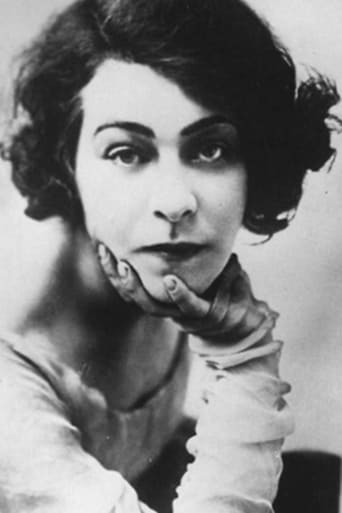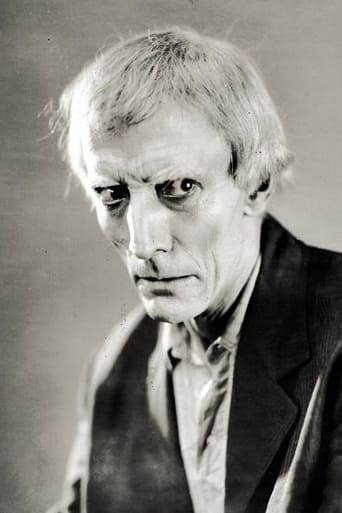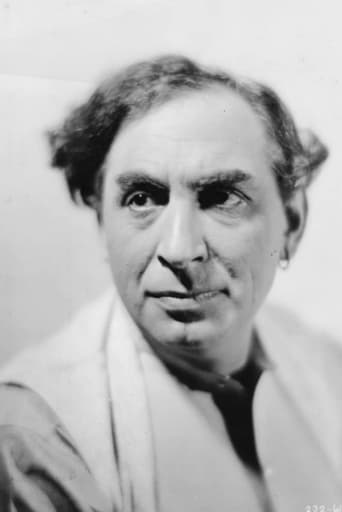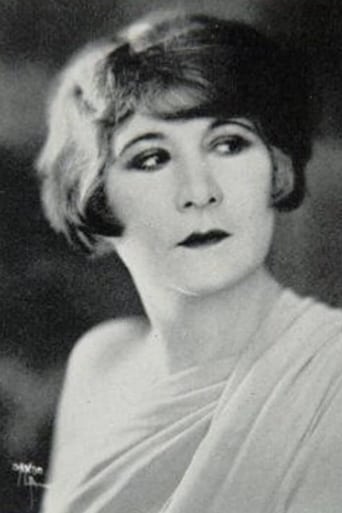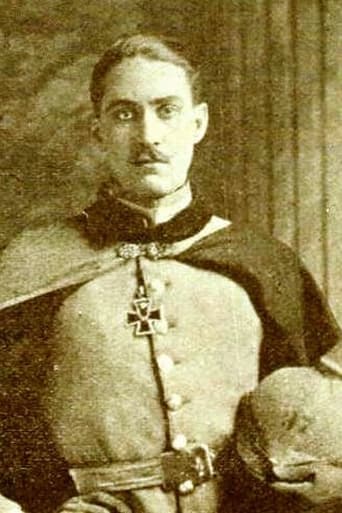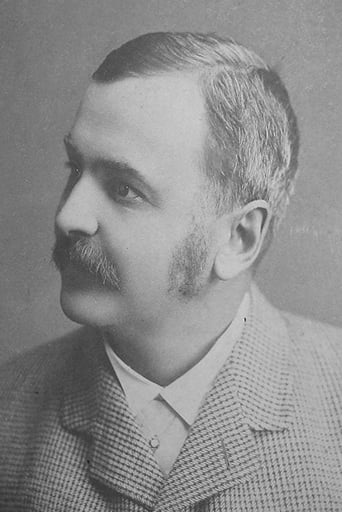Stevecorp
Don't listen to the negative reviews
Afouotos
Although it has its amusing moments, in eneral the plot does not convince.
Curapedi
I cannot think of one single thing that I would change about this film. The acting is incomparable, the directing deft, and the writing poignantly brilliant.
Kaydan Christian
A terrific literary drama and character piece that shows how the process of creating art can be seen differently by those doing it and those looking at it from the outside.
pontifikator
This silent movie is an adaptation of Oscar Wilde's play of the same name, starring Mitchell Lewis as Herod, Alla Nazimova as Salome, and Rose Dione (who played Madame Tetrallini in "Freaks") as Herodias, wife of Herod. The director was Charles Bryant.I've read Wilde's play but never seen it. I was concerned about taking this great poet's play and making it a silent movie, but overall I think the movie is a success. However, I stopped expecting the play and took the film on its own. There are some long title cards to wade through with some of Wilde's dialogue, but basically we have to take the movie as its own silent work of art.This is a movie I would recommend only to select portions of viewing audiences. The sets were by Natacha Rambova, and they were an attempt to suggest the Aubrey Beardsley illustrations in the printed copy of Wilde's script. The sets and scene designs are excellent in and of themselves and capture Beardsley's spirit admirably. Much of the opening is composed of static shots of actors posing, giving I suppose the Beardsley-like sets the attention they merit, but some audiences may find the opening shots unintentionally humorous and perhaps over-long. The costumes are also clearly inspired by Beardsley, so while we have suggestions of clothing worn by Sadducees, Pharisees, Romans, and so on, great liberties were taken, and the materials were much richer than I imagine was available back in the days of Herod. The style was much grander, as well. One of Salome's costumes is a totally modern strapless mini- dress, by the way, and Herodias reminded me throughout of Robert Crumb's prototypical hippie woman.The acting, like the sets and costumes, was not natural at all. This is a very stylized production. I was amazed, though, by Nazimova's pantomime of expressions flitting across her face as she was wooed by Herod and then rejected his advances. Nevertheless, much of the acting is dramatic posing of the characters for a few seconds in a static shot.Yet ... many of those static shots are excellent compositions with great lighting, especially the chiaroscuro effects when we see Jokaanan (also spelled Iokaanan) in his cell. It's a fascinating movie with many faults, I'm afraid. (I am reminded for some reason of Charles Laughton's "Night of the Hunter.")I think this version of "Salome" will be appreciated by select groups; persons interested in Beardsley, Expressionism, art films, scene and costume design, and other such esoterica will find the movie more interesting than general audiences, but general audiences may be intrigued by "Salome" as well.As a note, Natacha Rambova was born in Salt Lake City as Winifred Shaughnessy. At 17, she ran off to New York City, changed her name, and studied ballet under Russian Theodore Kosloff. Rambova began an affair with the married Kosloff, and her mother brought charges of statutory rape against him. Rambova fled to England to avoid the trial, and her mother relented, giving Rambova her way. It was through Kosloff that Rambova and Nazimova met. The affair with Kosloff ended (he shot her as she was leaving), and Rambova began an affair with an American actor known as Rudolph Valentino. Valentino was married at the time, and the affair complicated the divorce, but eventually Rambova and he were married. She worked with him on several of his films as costume and art designer.Nazimova was born in Yalta as Miriam Leventon. She took as her stage name that of a character in the Russian novel "Children of the Streets." She was a major star in pre-World War I Russia and was brought to Broadway, where she was also popular. She also became a star in Hollywood, and she began producing and directing her own films. However, "Salome" was such a complete failure that she could no longer attract financing, so she returned to the stage.Ken Russell directed a movie in 1988 called "Salome's Last Dance," which incorporated the play as part of a somewhat larger story involving Oscar Wilde's birthday. I'd forgotten who Ken Russell is until I saw the film. Only Stratford Johns (as Herod) was good in his role; the rest of the actors (including Glenda Jackson, I'm sorry to say) engaged in histrionics to put it mildly. Imogen Millais-Scott (as Salome) had two expressions: opening her eyes very widely and squinting. However, there was lots of nudity to save the day. Ken Russell fans will love the movie, but it's of little help appreciating Wilde's one act play, which must be padded to make it a full length movie (by, for example, adding in stuff about Wilde's birthday). Bryant's version follows the play and runs about an hour; "Salome's Last Dance" goes for an hour and a half.Millais-Scott has her own interesting story. She had diabetes since childhood and was legally blind when the movie was made. She has since had a transplant of kidneys and pancreas after renal failure; the transplanted pancreas has cured her diabetes (though not her blindness), but she has not returned to acting.
Gloede_The_Saint
Who would have thought the Americans would do expressionism so well? This is so out there that it even gives From Morn to Midnight a run for it's money. But effect is completely turn around. Sure, the absurdity is still there, but German expressionism is usually bound in some form of horror, this is bound in a biblical drama. It's just so ridiculous and over the top that I couldn't help getting pierced to the screen. Everything is exaggerated, the guards are parading around with their chests blown up like roosters, horrendous wigs and the most feminine gestures. And our lead, Salome, acts equally absurd, and her mother looks like a John Waters character. This is simply camp at it's finest. Not sure how much was intended, most probably, if not all, but hell, I don't care. My favorite movie of 1923 this far! 9/10.
MartinHafer
Wow--you have got to see this film for itself. There is absolutely no way I can adequately describe the look of the film--nothing I say will do it justice. I will try--but see it yourself--it's amazing. The film looks very much like it was inspired by the Art Nouveau movement--which would coincide with when the play was written (the very late 19th century). And, to go along with this, the costumes are wild--very, very ornate and very, very artsy. All of the costumes are totally unique. I particularly loved Nazimova's headdress. It must have cost a fortune to design and execute all this. As I said, you just have to see this! It's a fashion designer's delight--though some might blanch at its weirdness.The story of Salome is taken from the Biblical tale of John the Baptist. Though occupying just a tiny portion of the Gospels, here is it acted out in about 75 minutes. Young Salmone dances enticingly for the ruler of Judea, Herod. He is smitten with her and promises her anything. She asks for the head of John the Baptist--who Herod is holding captive.What makes this so unusual is HOW it's done as well as the highly unusual cast. If the IMDb trivia is to be trusted, it has an all-gay cast (unusual for a Bible story) and Nazimova was apparently a well-known bisexual. And, instead of a simple retelling of the story with cool costumes, the entire thing is very, very artsy and somewhat pretentious. It is NOT a film designed to be enjoyed by the masses--but is more an art house sort of production. Frankly, I think there was way too much in the posing and looking into space department! Overall, I'd give the costumes a 10 and the acting and plot a 2. Overall, a 4 seems fair considering that the film isn't particularly enjoyable despite the wow-factor of the look of the film.
innocuous
If you enjoy recent independent films and you are not threatened by silent films, then "Salome" is a film you need to watch at least once. It bears small relationship to Wilde's original work, since Wilde worked in language and the film is, of course, limited to title cards. But it was (and remains) an interesting experiment that stands up well with many other silent classics. The camera work is pretty pedestrian and the performances are typical for that era, but the costuming and sets are fairly daring.Nazimova really pulls it off as the 14-year-old Salome, though Mitchell Lewis and Rose Dione don't fare as well. The supporting actors are quite good as they ham it up. (Between the costuming and the mincing portrayals, this is about the "gayest" film prior to "Priscilla, Queen of the Desert".) It's been 85 years since this film was produced and I have yet to see a better light-bulbs-in-the-hair do than Salome's. You really have to give Rambova (and Beardsley) credit for their vision.As for the story...you guessed it: John the Baptist dies.Give this short silent flick a chance, if you have the opportunity.


